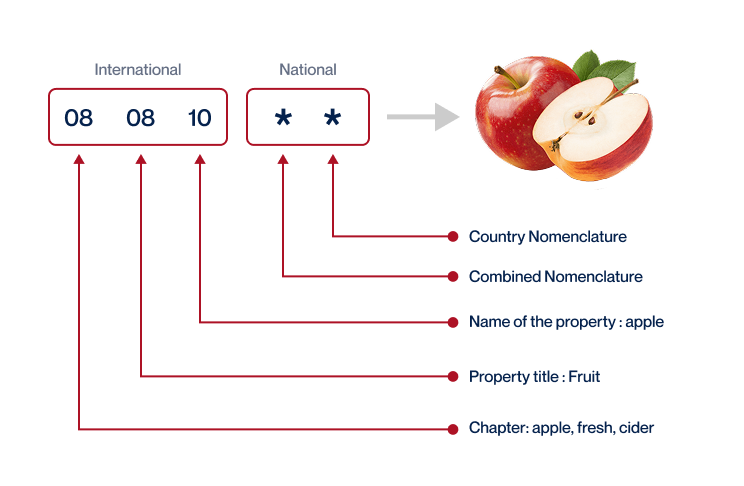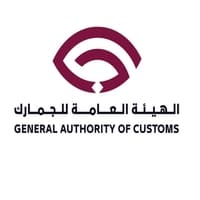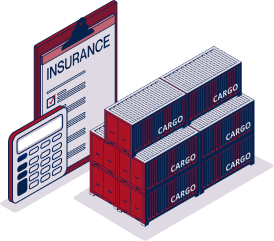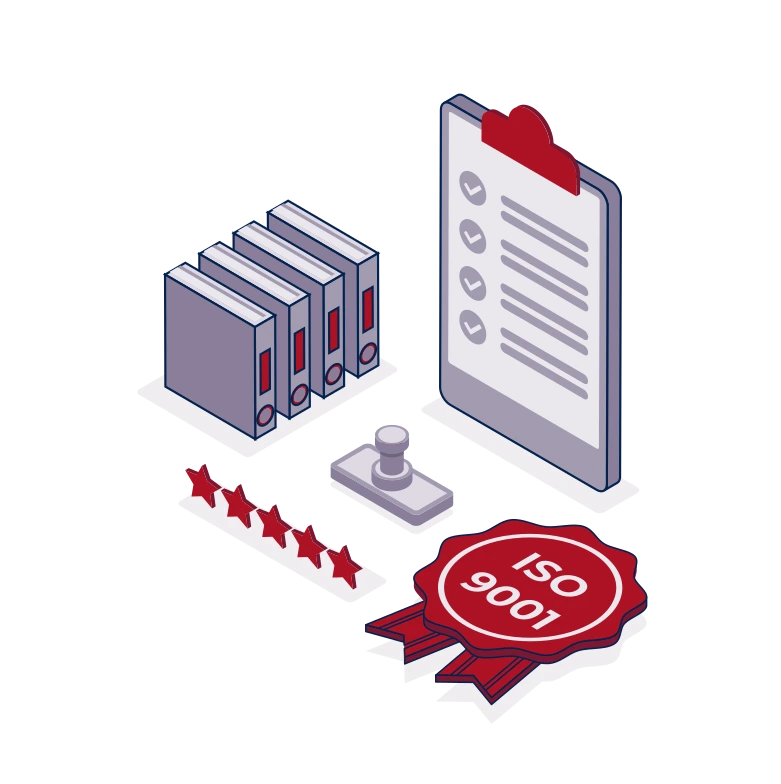Freight Shipping between Qatar and Sri Lanka | Rates – Transit times – Duties and Taxes
Did you hear the one about the package that walked into a bar? Jokes aside, the path to freight transportation between Qatar and Sri Lanka is paved with complexities - not least understanding fluctuating rates, unpredictable transit times, and ever-evolving customs regulations. This guide seeks to clarify these dark waters. It lays out a roadmap covering a spectrum of freight options, from air to sea, road to rail. You’ll also gain a deeper understanding of the intricacies of customs duties, taxes, and clearance procedures, providing an array of practical advice designed specifically for businesses. If the process still feels overwhelming, let DocShipper handle it for you! As a seasoned international freight forwarder, we can navigate the complexities every step of the way, turning your shipping challenges into success stories. This guide is your route to stress-free, efficient freight transportation between Qatar and Sri Lanka.
Which are the different modes of transportation between Qatar and Sri Lanka?
In the game of international trade, choosing your mode of transport is like picking the right chess piece - strategy matters. For shipping goods between Qatar and Sri Lanka, geography plays a character as crucial as a queen on your chessboard. With seas as their borders, air and ocean freights are the knights in your game, offering direct and efficient routes. Contemplating the best approach? Well, it's like picking the best chess move - it all depends on your specific shipping requirements and strategies. So, let's decode the shipping story between these two countries and help you conquer your game of chess!
Need help with your shipment?
Need assistance with your shipment? Dont hesitate to contact us even for a simple question. Choose the option that suits you
Live chat with an expert Chat on WhatsApp Free Quote 24hHow can DocShipper help you

Sea freight between Qatar and Sri Lanka
Maritime shipping between Qatar and Sri Lanka plays a pivotal role in global trade, connecting the thriving hubs of Doha and Colombo. These bustling cargo ports serve as the backbone of an efficient sea-rail-road network that helps transport high-volume shipments spanning diverse industries. Sea freight, while slower, is an unbeatable choice for transporting large consignments cost-effectively. Yet, managing logistics across these borders often poses a challenge for many businesses.
The crux lies in common missteps like incorrect documentation or overlooking trade regulations. But don’t worry, a smoother sailing across this sea of complexity is achievable. This guide will illuminate the pathways of best practice, detailing customs protocols, and offering tips to avoid common pitfalls. Just like a seasoned chef perfecting a recipe, mastering the art of trans-border shipping comes with understanding the ingredients – in our case, the regulations, shipping procedures, and market nuances. So, prepare for a maritime journey that elevates your shipping experiences between Qatar and Sri Lanka.
Main shipping ports in Qatar
Hamad Port
Location and Volume: Located on Qatar’s eastern coast between Al Wakrah and Mesaieed, Hamad Port plays a vital role in the region’s trade activity. With a capacity to handle 7.8 million TEUs (twenty-foot equivalent units), it is the largest port in the Middle East and an essential component in Qatar’s economic infrastructure.
Key Trading Partners and Strategic Importance: Key trading partners of Hamad Port include China, the USA, and various countries within the Gulf Cooperation Council. Its strategic importance lies in its capacity to serve large, modern container ships, and it stands as a symbol of Qatar’s rapid economic development.
Context for Businesses: If your business is looking to expand into the Middle Eastern market, you might seriously want to consider Hamad Port as part of your shipping strategy. Given its large shipping volume and key trading partnerships, it can provide significant access to regional and international markets.
Doha Port
Location and Volume: Positioned in the heart of Qatar’s capital, Doha Port had been the primary maritime gateway for Qatar prior to the opening of Hamad Port. With a more modest capacity – handling cruise ships and serving the local Qatari market primarily – it is nonetheless a significant component of the country’s shipping industry.
Key Trading Partners and Strategic Importance: Doha Port largely transacts with local and regional trading partners. It is strategically significant for businesses looking at tourism or short route shipping within the region.
Context for Businesses: Doha Port could be a strategic logistic choice if your business focuses on local and regional markets in the Middle East. Its central location and connectivity within the local market can provide added benefits, particularly for tourism-related ventures or businesses operating within the domestic market.
Ras Laffan Port
Location and Volume: Situated on the North-East coast of Qatar, Ras Laffan Port primarily caters to the natural gas industry. Its shipping volume is closely allied with the fluctuations of the gas industry.
Key Trading Partners and Strategic Importance: Ras Laffan Port’s main trading partners are countries investing in or requiring natural gas, making it a globally significant port. Its strategic importance extends beyond trade – as the principal gateway for Qatar’s LNG exports, it is also crucial to the global energy industry.
Context for Businesses: If your business operates within the energy sector, particularly natural gas, Ras Laffan Port may hold significant strategic advantages. Using this port could give your business a strong foothold in both the international energy market and Qatar’s thriving domestic market.
Ras Laffan Port
Location and Volume: Situated on the North-East coast of Qatar, Ras Laffan Port primarily caters to the natural gas industry. Its shipping volume is closely allied with the fluctuations of the gas industry.
Key Trading Partners and Strategic Importance: Ras Laffan Port’s main trading partners are countries investing in or requiring natural gas, making it a globally significant port. Its strategic importance extends beyond trade – as the principal gateway for Qatar’s LNG exports, it is also crucial to the global energy industry.
Context for Businesses: If your business operates within the energy sector, particularly natural gas, Ras Laffan Port may hold significant strategic advantages. Using this port could give your business a strong foothold in both the international energy market and Qatar’s thriving domestic market.
Should I choose FCL or LCL when shipping between Qatar and Sri Lanka?
Shipping goods between Qatar and Sri Lanka? It’s about weighing up Full Container Load (FCL) against Less than Container Load (LCL) or consolidation in sea freight. Choosing right could save you cash and time, shaping the outcome of your shipping venture. This section gets down to the nitty-gritty of these two options, helping you make an informed, strategic decision that aligns with your specific needs. Let’s dive in!
Full container load (FCL)
Definition: FCL or Full Container Load shipping is a type of maritime transport where a complete container is occupied by a single buyer's goods.
When to Use: FCL shipping is ideal for consignments larger than 13/14/15 CBM, mainly because it's cost-effective for higher volumes. Given that the container is sealed from origin to destination, it also reduces potential cargo damage, enhancing safety.
Example: For instance, if a Doha-based furniture manufacturer needs to ship 100 bulk units of 20'ft or 40'ft container-sized tables to Colombo, choosing an FCL option would be apt. The entire FCL container will be used, mitigating the risk of mishandling and providing better value for money.
Cost Implications: The cost of FCL shipping is generally higher than less-than-container-load (LCL) when calculated per unit. However, for larger consignments, an FCL shipping quote usually presents a cheaper option due to its flat rate, compared to the volume-based rate of LCL. Furthermore, the certainty of a sealed journey ensures minimal unforeseen costs related to damage or loss.
Do get in touch to bring down the shipping charges even lower with tailored FCL quotes for your specific needs.
Less container load (LCL)
Definition: LCL, or Less than Container Load, refers to a type of shipping where your freight does not fill an entire container and is combined with cargo from other shippers.
When to Use: You should consider LCL when the volume of your cargo is less than 13 to 15 CBM. This option offers price flexibility making it an economical choice when dealing with lower volumes.
Example: Imagine you own a Qatari business dealing in handmade rugs and you have an order of 50 rugs from Sri Lanka. The total volume might not merit a full container. Instead, you could use LCL freight to ship these rugs, grouping your shipment with others in the same container bound for Sri Lanka.
Cost Implications: Although LCL freight rates may be higher per CBM, the total cost ends up lower because you're only paying for the space your goods occupy. However, additional fees such as LCL handling and de-consolidation fees at the destination port may apply. Therefore, it's essential to obtain an accurate LCL shipping quote to confirm if this option is the most cost-effective for your goods.
Hassle-free shipping
Choosing between consolidation and a full container for your Qatar-Sri Lanka shipment can be overwhelming. As a dedicated international freight forwarder, DocShipper's mission is to simplify cargo shipping. Our ocean freight experts consider factors like your cargo volume, budget, and delivery timeline to ascertain the most cost-effective and efficient shipping method. Get a step closer to a hassle-free logistics experience - request a free estimate from DocShipper today!
On average, sea freight from Qatar to Sri Lanka takes 4-6 weeks. Bear in mind, this duration isn’t set in stone. It alters based on various factors including the specific ports used, weight, and nature of the goods. Therefore, to get a detailed and personalized quote for your shipment, it is highly recommended to contact a reliable freight forwarder, such as DocShipper.
Let’s delve into average transit times between the primary ports in Qatar and Sri Lanka:
| Qatar Ports | Sri Lanka Ports | Average Transit Time (Days) |
| Hamad Port | Colombo Port | 12 |
| Hamad Port | Trincomalee Port | 12 |
| Hamad Port | Galle Port | 12 |
| Hamad Port | Hambantota Port | 12 |
*Please note that these are only averages and actual times can vary depending on the variables listed above.
How much does it cost to ship a container between Qatar and Sri Lanka?
Pinpointing an exact cost for shipping a container between Qatar and Sri Lanka is akin to catching a fish in the ocean with bare hands! It’s tough, as ocean freight rates oscillate due to factors such as Point of Loading, Point of Destination, the carrier, and the type of cargo. Add in monthly market fluctuations, and it’s clear we’re navigating a dynamic landscape. But fear not, we tailor our shipping quotes to your specific needs, carefully reviewing each case to offer the finest rates in the market. Rest assured, our shipping specialists are committed to navigating these waters for you, steadfast in delivering value for every cent of your shipping cost.
Special transportation services
Out of Gauge (OOG) Container
Definition: An OOG container is designed to carry large, heavy, or oddly-shaped loads that don’t fit within standard container dimensions.
Suitable for: Large and irregularly sized items, typically heavy-duty industrial or construction equipment.
Examples: Construction machinery, wind turbines, ship parts, oversized machinery tools.
Why it might be the best choice for you: If your business deals with out of gauge cargo that exceeds standard container dimensions, OOG container shipment provides a reliable way to transport your goods between Qatar and Sri Lanka with the assurance that your cargo will be handled safely.
Break Bulk
Definition: Break bulk involves the transportation of goods that must be loaded individually rather than in containers.
Suitable for: Cargo that is either too big or too heavy to be loaded in a normal container.
Examples: Construction equipment, yachts, steel beams, food stuffs.
Why it might be the best choice for you: If you deal with large, heavy goods that don’t necessarily fit a standard container’s dimension and can be handled individually, break bulk shipping method is appropriate for your transportation needs.
Dry Bulk
Definition: Dry bulk shipping refers to the method of transporting commodities in large quantities in unpackaged forms.
Suitable for: Goods such as coal, cement, grains, or other similar products.
Examples: Sand, barley, coal, or fertilizers.
Why it might be the best choice for you: If your business requires the transportation of massive quantities of loose cargo load like construction materials, agricultural goods, or minerals, dry bulk shipping offers a cost-effective solution.
Roll-on/Roll-off (Ro-Ro)
Definition: Ro-Ro is a type of ocean freight where vehicles are driven on and off a ro-ro vessel which is designed to carry wheeled cargo.
Suitable for: Cars, trucks, semi-trailer trucks, trailers, and railroad cars.
Examples: New cars for dealerships, heavy machinery on wheels, trailers with goods.
Why it might be the best choice for you: If your business is about transporting wheeled cargo, the Roll-on/Roll-off method ensures your vehicles reach their destination undamaged with minimal handling.
Reefer Containers
Definition: Reefer containers are refrigerated containers used to transport temperature-sensitive cargo.
Suitable for: Perishable goods such as fruits, vegetables, dairy products, and pharmaceuticals.
Examples: Seafood, meat, flowers, dairy products.
Why it might be the best choice for you: If your business deals in perishable items that require temperature control throughout their journey from Qatar to Sri Lanka, using reefer containers ensures your goods stay fresh and protected.
At DocShipper, we offer all these services and more, making your shipping experience easy and convenient. If you’re unsure about your best option, contact us for a free shipping quote in less than 24 hours. We’re here to help you find the solution that best fits your business’s needs.
Air freight between Qatar and Sri Lanka
Air freight, the quickest and most reliable way to transport goods, has become a preferred choice for businesses moving small but valuable items between Qatar and Sri Lanka. Picture shipping a small batch of electronics: you’d want them to reach fast and safe, right? Air freight fits the bill. It doesn’t break your bank and assures your high-valued goods fly out of Qatar and into Sri Lanka like a falcon at warp speed.
But beware! Freight-forwarding isn’t a child’s game of air-planes. Many stumble by underestimating key factors before going the air freight route. Unfortunately, this is akin to buying a car just by its looks, without considering mileage or maintenance costs. Missteps such as miscalculating the freight chargeable weight or overlooking industry best practices can inflate costs faster than a helium balloon. We’ll delve into these common missteps and equip you with the must-knows to master the airspace.
Air Cargo vs Express Air Freight: How should I ship?
Deciding between Air Cargo and Express Air Freight for your Qatar-Sri Lanka shipments? Think of it this way: air cargo is the economy class seat in a commercial airline, cost-effective but might take a bit of time, while express freight is the private jet, a tad pricier but gets your goods there in a jiffy. Tune in as we delve into the nitty-gritty of each option to help you make the smartest choice for your business!
Should I choose Air Cargo between Qatar and Sri Lanka?
Air cargo from Qatar to Sri Lanka can be a cost-effective and reliable shipping solution. Prominent airlines like Qatar Airways and SriLankan Airlines play critical roles in this sector. Fixed schedules, though leading to longer transit times, ensure predictability. This option notably gains traction when shipping bulk quantities, exceeding 100/150 kg (220/330 lbs). Even if your budget is tight, choosing air cargo might align with your business’s financial needs. On examining these factors, you may ascertain if air cargo is the right fit for your needs.

Should I choose Express Air Freight between Qatar and Sri Lanka?
In cases where time is of the essence or when you’re shipping goods amounting to less than 1 CBM or weighing less than 100/150 kg (220/330 lbs), Express Air Freight can be your go-to choice. This service, provided by internationally reputed courier firms like FedEx,UPS, and DHL, employs dedicated cargo planes devoid of passengers to ensure rapid delivery from Qatar to Sri Lanka. Opting for Express Air Freight not only speeds up your shipments but also simplifies customs procedures, potentially saving your business precious time and money.

Main international airports in Qatar
Hamad International Airport
Cargo Volume: Hamad International Airport, in 2019 alone, managed over 2.1 million tons of cargo. It’s Qatar’s primary airport for air freight, with substantial infrastructure and capabilities.
Key Trading Partners: The airport’s key trading partners are primarily located in Asia and Europe, with China, the U.S., and Germany being significant freight destinations.
Strategic Importance: Located in Doha, the capital of Qatar, this airport is a key hub in the Middle East which connects flights to Europe, Africa, and Asia, making it crucial for businesses involved in international trade.
Notable Features: Some of the main features include temperature-controlled spaces for sensitive cargo, dedicated freighter stands, and robust security measures.
For Your Business: If your shipment requires fast transit times or includes high-valued goods, Hamad International could be a brilliant choice. With its global reach and specialized handling facilities, it can accommodate diverse cargo types, ensuring your goods reach their destination securely and on time.
Al Udeid Air Base
Cargo Volume: While exact civilian cargo volumes are not publicly shared given its status as a military facility, Al Udeid does offer limited commercial freight capacity.
Key Trading Partners: Given the airport’s military function, standard trade routes are not as prominent. Commercial partners are mostly regional or situational, depending on military needs.
Strategic Importance: Despite its military focus, the airport’s vast infrastructure and strategic location near major cities make it a potential asset for larger, corporate shippers.
Notable Features: Since Al Udeid is a military base, security is stringent. While this could delay processes, it assures high security for valuable cargo.
For Your Business: If you are moving freight in larger volumes or need high-security assurance, Al Udeid might provide the capacity and security you need, provided you can navigate the additional complexities of military-related logistics.
Main international airports in Sri Lanka
Bandaranaike International Airport
Cargo Volume: Bandaranaike International Airport (BIA) handled over 250,000 metric tons of cargo in 2019, making it Sri Lanka’s primary international gateway for air cargo.
Key Trading Partners: The main trading partners for cargo volume include countries in the Middle East, East Asia, Europe, and other parts of South Asia.
Strategic Importance: Located in Katunayake, this airport serves as the hub for SriLankan Cargo, which provides ample opportunity for direct shipping to and from many global cities.
Notable Features: The airport offers modern cargo facilities capable of accommodating any type of commodity, including perishable goods, hazardous materials, and live animals. It also features the latest customs management system to expedite the clearance process.
For Your Business: If your business frequently trades with Asian or European countries, BIA’s extensive connections and efficient services can support your shipping strategy, reducing transportation times and ensuring your goods are handled carefully throughout their journey.
Mattala Rajapaksa International Airport
Cargo Volume: Mattala Rajapaksa International Airport, while a secondary international airport, still moves substantial cargo volumes each year, enhancing its relevance for businesses.
Key Trading Partners: It caters primarily to the Middle East, East Asia, and South Asian countries, with scheduled and charter cargo services.
Strategic Importance: Strategically located in the Southern Province of Sri Lanka, this airport serves as an alternative to BIA, especially for businesses located in the southern region.
Notable Features: The airport boasts a modern air cargo village that can accommodate a wide range of cargo types, including livestock and perishables. It also has advanced customs facilities to facilitate smooth clearance.
For Your Business: The advantage of Mattala Rajapaksa lies in its strategic location. If your business is located in the southern region of Sri Lanka or if your supply chain involves the neighboring regions, this airport can potentially simplify your logistics process and decrease transportation costs.
How long does air freight take between Qatar and Sri Lanka?
On average, it typically takes between 1 to 4 days to ship goods from Qatar to Sri Lanka via air freight. However, do note that shipping times can depend on a variety of factors. The specific airports involved, the weight of your shipment, and the type of goods being transported can influence the transit duration. For a more accurate estimation tailored to your specific shipping needs, it would be best to consult with a freight forwarder like DocShipper.
How much does it cost to ship a parcel between Qatar and Sri Lanka with air freight?
Transferring an air freight package between Qatar and Sri Lanka roughly ranges from $3 to $8 per kilogram. However, an exact cost is complex to compute upfront due to varying factors: location of airport departure and arrival, dimensions, weight, and the nature of your goods. Deviating from a one-size-fits-all approach, our team commits to working with you to provide the best feasible rate tailored to your specific needs. Contact us here and receive a free quote within less than 24 hours. Your unique circumstances guide our bespoke quotes, ensuring we deliver the most economical, efficient, and expedient solution possible.
What is the difference between volumetric and gross weight?
Let’s first clarify the two types of weight in air freight shipping: gross weight and volumetric weight.
Gross weight refers to the actual weight of your shipment including all its packaging. This is the physical weight that you can feel when you pick up the package.
Volumetric weight, on the other hand, takes into account the size of your shipment. This concept comes from the idea that large, lightweight items can take up valuable space on an aircraft.
Now, let’s dive deeper. For air cargo, the volumetric weight of your shipment is calculated by multiplying the package’s dimensions (length, width, and height in centimeters) and then dividing the result by 6000.
Suppose you have a package measuring 50cm x 40cm x 30cm, its volumetric weight would be 50x40x30/6000, equal to 20 kg (or about 44 lbs).
Meanwhile, gross weight is the actual weight you see when you put your package on a scale. If your package weighs 15 kg (about 33 lbs), that’s your gross weight.
Express air freight services follow a similar calculation, but the divisor is 5000, not 6000. So, the same package in our example would have a volumetric weight of 50x40x30/5000, equal to 24 kg (or roughly 53 lbs).
Now, why does this matter?
Freight charges are typically determined based on whichever weight is higher between gross weight and volumetric weight. This ensures freight carriers are fairly compensated either for the weight or space your shipment takes up on the plane. So, understanding these calculations can help you estimate more accurately your shipping costs.

Door to door between Qatar and Sri Lanka
Door to door shipping is simply ease personified – taking your goods from one specific location in Qatar right to the chosen destination in Sri Lanka. This approach eliminates multiple handovers, cuts the risk of damage, and promises time efficiency. It’s convenience on a platter, especially for businesses prioritizing hassle-free logistics. Now, let’s dive into how this plays out in practical terms.
Overview – Door to Door
Experiencing the stress of international shipping between Qatar and Sri Lanka? The door-to-door service is your go-to solution. Praised for eliminating complexities, it saves you the pain of dealing with customs clearance and multiple handlers—an often overwhelming aspect for many of our clients at DocShipper. However, bear in mind, this service may come with a slightly higher cost. Despite this, the trade-off for absolute convenience, time saving, and peace of mind make it worth every penny—it’s why it’s the choice of most businesses. Tune in for in-depth details about this game-changer in the logistics field.
Why should I use a Door to Door service between Qatar and Sri Lanka?
Ever wondered why Santa Claus has such a reputation for efficient delivery? He uses Door to Door service! Now, let’s talk about your own shipping journey from Qatar to Sri Lanka. Here are five pivotal reasons why Door to Door service leaves no stone unturned when it comes to easy and efficient trade.
1. Removal of Logistical Worries: Treat yourself to a stress-free experience. The Door to Door service takes charge of your goods right from pickup, navigates through all the tricky parts of transportation, and delivers it to your doorstep.
2. Timely Deliveries: Urgent shipments are no sweat. The attention to every detail in this service ensures quicker and prompt deliveries. You don’t need to fret about those deadlines anymore.
3. Specialized Handling: Complex cargo requires exceptional care. Be it machinery, electronics, or fragile items, Door to Door service can cater to your specialized needs with a tailored approach. Your goods are in expert hands all the way.
4. Convenience Super-Charged: Say goodbye to partial responsibility. No hopping between various agencies to handle each stage of transport, Door to Door service takes it all on, leaving you free to concentrate on your business.
5. Thorough Until the Final Destination: With Door to Door service, the journey isn’t over until your package is at your doorstep. Compared to port-to-port or terminal-to-terminal options, you’ll find peace of mind knowing that your cargo’s complete transit is taken care of.
In a nutshell, Door to Door service between Qatar and Sri Lanka shaped as your very own Santa Claus, streamlining your shipping process while ensuring efficiency in every milestone.
DocShipper – Door to Door specialist between Qatar and Sri Lanka
Enjoy a seamless shipping experience from Qatar to Sri Lanka with DocShipper! We manage everything from packing your goods to handling customs, employing various shipping methods to suit your specific needs. Our team is proficient, skilled, and ready to provide stress-free door-to-door service. Plus, you’ll have a dedicated Account Executive for personalized assistance. Contact us today for a free estimate in under 24 hours, or chat with our consultants at no cost. We’re here to streamline your international shipping process.
Customs clearance in Sri Lanka for goods imported from Qatar
Navigating the maze of customs clearance in Sri Lanka for goods imported from Qatar requires meticulous planning and understanding. This complexity stems from potential pitfalls, such as unexpected charges or your goods getting stuck in customs due to insufficient knowledge of taxes, customs duties, quotas, and licenses. Understand this: your cargo’s smooth journey hinges on comprehending these factors. Don’t worry – we’ll guide you through nuance by nuance in the following sections. Plus, here’s the best part: DocShipper has got your back in this entire process for any type of goods, globally. Need an estimation for your project? Contact our team with your goods’ origin, value, and HS Code. These are the only three things we need to kickstart your estimate. Stay tuned, we’ll dive deeper into the customs scene in Sri Lanka.
How to calculate duties & taxes when importing from Qatar to Sri Lanka?
Understanding how to estimate duties and taxes when importing from Qatar to Sri Lanka entails an in-depth knowledge of several important factors, each playing a crucial role in determining the final cost. These factors include the country of origin (the place where the goods were originally manufactured or produced), the Harmonized System Code (HS Code) of the products, the Customs Value (typically the Cost, Insurance, and Freight – CIF value), the Applicable Tariff Rate, and any additional taxes or fees that may apply to the specific products you plan on importing.
Embarking on this process, your first step hinges on identifying the exact country where the goods in question were manufactured or produced. This is also known as the country of origin, and it forms an essential foundation to accurately calculate the corresponding customs duties and taxes. Knowing this will lay the groundwork for any importer looking to successfully navigate the often complex landscape of international trade.
Step 1 – Identify the Country of Origin
Identifying the country of origin is the first rung on the ladder of estimating duties and taxes when importing goods from Qatar to Sri Lanka, so don’t take it lightly! Here’s why this step is indispensable:
1. Sets the Rulebook: Trade relations between countries dictate customs rules. Look no further than the ‘Agreement on South Asian Free Trade Area’ which sees Qatar and Sri Lanka as members, impacting your shipment duties positively.
2. Unveils Restrictions: Certain products have import restrictions like Fertilizers, so know your product before you ship it.
3. Reveals Duty Exemptions: Highlighting the origin country could offer duty exemptions on various goods.
4. Avoids Legal Hassles: Proper documentation of origin keeps law-related issues at rest.
5. Impacts HS code: The country of origin can affect the HS code.
For tailor-made advice, familiarize yourself with the ‘Sri Lanka Customs National Imports Tariff Guide’. We can’t stress it enough – know your product, know the origin, and say hello to a successful shipment! Maximize your business potential by reading the fine print and playing the trade game by the rules.
Step 2 – Find the HS Code of your product
The Harmonized System (HS) code is a standardized numerical method of classifying traded products. It is used by customs authorities around the world to identify products for the purpose of levying duties and taxes. Accurate identification of your product’s HS code is crucial for ensuring smooth customs clearance and determining applicable tariffs.
One of the easiest ways to find your product’s HS code is by consulting with your supplier as they are usually familiar with the products they’re importing and the associated regulations.
However, if the supplier is unable to provide the HS code, don’t worry, we’ve got a simple step by step process for you to find it yourself:
1. Visit the Harmonized Tariff Schedule on the U.S. International Trade Commission website.
2. Use the search bar and type in the name of your product.
3. Refer to the ‘Heading/Subheading’ column to find the HS code for your product.
Please note, it’s imperative to choose the correct HS code for your goods. An incorrect code can lead to delays in customs and even result in potential fines for incorrect declarations.
Here’s an infographic showing you how to read an HS code.

Step 3 – Calculate the Customs Value
Understanding ‘Customs Value’ can seem like navigating a maze, but fear not! Simply put, it’s not just about the price tag on your goods. Customs value, particularly for products shipped from Qatar to Sri Lanka, is a compilation of the value of your goods, the cost of international shipping and the insurance cost – all combined. This is also known as the CIF value (Cost, Insurance, and Freight).
So if your plush toys valued at $1000 are being shipped for $200 and insured for $50, your customs value would be $1250. This value plays a crucial role in calculating the customs duties you owe, so ensuring it’s accurate saves you from unexpected costs. It’s all about adding the right figures together!
Step 4 – Figure out the applicable Import Tariff
Import Tariffs are taxes imposed on imported goods, calculated as a percentage of the product’s commercial value. Sri Lanka operates on a Harmonized System (HS) for tariffs, which globally standardizes the classification of goods.
As a practical guide, let’s focus on importing porcelain tableware from Qatar to Sri Lanka, which carries an HS code of 6911. Here’s how you would identify your import tariff:
1. Visit Sri Lanka customs.
2. Enter the HS code ‘6911’ into the search field.
3. Identify the import tariff rate assigned to your product. For our porcelain tableware, this would hypothetically be 30%.
Next, calculate the Customs Value, the Cost Insurance and Freight (CIF). An example CIF cost might be $2000. Import duties are then calculated from this Customs Value. Thus, for our example, a 30% tariff on a CIF of $2000 means you’d have $600 as import duties.
Understanding your import tariff and knowing how to calculate evaluations will give you price certainty and smoother operations when importing goods to Sri Lanka.
Step 5 – Consider other Import Duties and Taxes
At this stage, you’ve already got a grasp of the standard tariff. However, it’s crucial to note there could be additional import duties, varying by product and country of origin. One is the Excise Duty. If, for instance, you’re importing luxury goods, Sri Lanka may impose this tax. Just an illustration, a fancy pen from Qatar could attract an Excise Duty of 20%.
There’s also the Anti-dumping Tax. Say a Qatar-based company is selling pens in Sri Lanka significantly cheaper than the local market rate. To protect its economy, Sri Lanka might have an Anti-dumping Tax, which could be an extra 15%.
The trickiest is the VAT. In Sri Lanka, it often applies to the cumulative total of the value of the goods, insurance, freight, standard tariff, Excise Duty, and Anti-dumping Tax. For example, if the total comes to $100, a VAT rate of 8% means you’ll need to pay an extra $8.
Understanding these can be complex, but being aware helps you estimate costs accurately and avoid surprises. Please note, figures provided are just illustrations and actual rates might vary. Consult with your elected freight forwarder or customs authority for the exact figures.
Step 6 – Calculate the Customs Duties
The calculation of customs duties in Sri Lanka can seem complex. You’ll need to factor in elements like Value Added Tax (VAT) and anti-dumping taxes.
Your first step is to determine the customs value of your goods. Let’s say you’re shipping a product valued at $1000 with no VAT. After applying Sri Lanka’s regular customs duty rate, suppose 15%, your total comes to $1150.
Adding VAT is where it gets a bit tricky. If your goods have both customs duties and a 12% VAT, you need to apply VAT to the product value plus customs duties. So, your $1000 goods with a 15% customs duty would have a total value of $1380 after including VAT.
Lastly, if your goods have customs duties, VAT, a 10% anti-dumping tax, and 7.5% Excise Duty, everything is applied to the sum of the previous steps. Your initial $1000 value now increases to $1563.5.
These calculations can get complicated with more factors and larger values, and miscalculations can lead to overspending. To avoid this, consider DocShipper’s customs clearance services. We handle every step, ensuring accurate calculations and avoiding overcharges. For a free quote within 24 hours, simply contact us. Shipping internationally doesn’t need to be a financial puzzle, let us help you solve it.
Does DocShipper charge customs fees?
At DocShipper, we pride ourselves on transparency – we manage customs clearance in Qatar and Sri Lanka painlessly and without hidden costs. Here’s the catch: while we do charge a fee for facilitating seamless customs clearance, we don’t levy your actual customs duties – these go straight to the government. And to quell your concerns, we’ll provide documents from the customs office guaranteeing that you’re only paying government-mandated charges. Picture it like a delivery handler fee at your favorite pizza joint – you pay for the pizza (duties to the government), and a small fee for getting it to your doorstep (our clearance service).
Contact Details for Customs Authorities
Qatar Customs

Official name: General Authority of Customs – Qatar Official website: https://www.customs.gov.qa/
Sri Lanka Customs

Official name: Sri Lanka Customs Official website: http://www.customs.gov.lk/
Required documents for customs clearance
Untangling the web of customs clearance can be daunting! This part of our guide demystifies essential paperwork like the Bill of Lading, Packing List, Certificate of Origin, and Documents of Conformity (CE standard). Let’s bring clarity to these documents and simplify your shipping journey. No more sleepless nights over customs confusion!
Bill of Lading
When shipping goods from Qatar to Sri Lanka, understanding the Bill of Lading is essential. It legally documents the transfer of cargo from the shipper to the carrier, a pivotal passage in your shipment’s journey. More than just a receipt, it’s a contract that ensures your goods are in safe hands. With a telex (electronic) release, speedy and efficient transactions are at your fingertips – no cargo holdups at Sri Lanka ports due to missing paperwork. And for air cargo? Don’t forget your Air Waybill (AWB), the Bill of Lading’s equivalent in the sky. Harnessing these tools can streamline your shipping process from Doha to Colombo. Stay ahead in the game – ensure your paperwork is as ready-to-go as your goods.
Packing List
Navigating customs between Qatar and Sri Lanka? Your Packing List is key. It’s not just a rundown of what’s in the cargo, it’s the guidebook that draws a clear line through clearance. When accuracy meets detail, it’s smooth sailing – or flying!
For instance, let’s say you’re a shipper of construction materials. If customs officials see ‘steel rods’ on your Packing List without sufficient detail like quantity, weight, or country of origin, prepare for delays. Erroneous entries? That’s a ticket to a customs hold up. Simply put, a diligently prepared Packing List is your passport in the freight world for both sea and air shipments.
Remember, precision here is non-negotiable. Officials neither appreciate vague entries nor do they unravel riddles. Spell it out, make it count, and watch as your goods chart the course from Doha to Colombo seamlessly.
Commercial Invoice
When it comes to shipping between Qatar and Sri Lanka, a well-prepared Commercial Invoice is your best friend! This valuable document serves as your official record of the transaction, detailing necessary info like the seller and buyer names, description of goods, HS codes, and value of merchandise. Errors or inconsistency in this document can cause unnecessary delays in customs clearance, spiking up your freight costs.
Remember, your Commercial Invoice and Bill of Lading should be a perfect match! They’re like a well-synchonized duo on the dance floor – when one twirls, the other follows. A harmonious alignment can speed up your shipment’s journey through customs.
Let’s say you’re shipping carpets from Doha to Colombo. Make sure you correctly state the type, quantity, and weight on your Commercial Invoice, also confirming that it aligns with the details on the B/L. A small effort can save you a significant hassle later!
Certificate of Origin
When shipping goods between Qatar and Sri Lanka, a pivotal document is the Certificate of Origin (CO). This certificate testifies where your products were manufactured and could unlock benefits like preferred duty rates. For instance, a business in Doha exporting jewelry made in Qatar to Colombo could enjoy lower tariffs due to a trade agreement, but only if the CO rightly states Qatar as the manufacturing country. Be thorough and precise when mentioning the country of manufacture—a slight oversight could result in denied benefits. It’s not just paperwork; the CO is your ticket to smoother, cost-effective shipping. Understand its power and you’re one step closer to winning the international logistics game.
Your EORI number (Economic Operator Registration Identification)
Navigating the shipment of goods between Qatar and Sri Lanka can throw a curveball at you, especially when it comes to customs documentation. Here, a crucial one is the EORI Number, a unique identifier for businesses and individuals involved in importing and exporting. Although it was primarily designed for the EU system, it’s also necessary for trading with countries like Qatar which require it. Through EORI, each transaction becomes transparent, aiding in prompt customs clearance and tracking the movement of goods. The sad part, if you’re not registered yet! But, the comforting part, you can easily apply for it online through the customs website in your home country. Indeed, a small effort for ensuring your business operations remain as smooth as the Arabian Sea. Now, isn’t that a relief?
Get Started with DocShipper
Prohibited and Restricted items when importing into Sri Lanka
Confronted with Sri Lankan import laws? It’s crucial to know what you can’t send. Missteps can stall your shipment or incur fines. Let’s unravel the mystery around prohibited and restricted items in Sri Lanka. A misinformed choice could cost you time and money, so let’s steer clear of those pitfalls.
Are there any trade agreements between Qatar and Sri Lanka?
As of today, Qatar and Sri Lanka have no formal Free Trade Agreements (FTAs) or Economic Partnership Agreements (EPAs). But don’t be disheartened! Both countries share strong bilateral ties, actively fostering increased trade connectivity, with discussions of potential partnerships on the horizon.
Agreement on Economic, Commercial & Technical Cooperation between Sri Lanka and Qatar was signed on 15th January 2012 in Colombo.
Qatar – Sri Lanka trade and economic relationship
In the years since Sri Lanka gained independence, its relationship with Qatar has blossomed into a memorable 45-year economic partnership. Dominated by Qatari investments in Sri Lanka’s real estate, construction, and energy sectors, the economic bond between these countries has progressed steadily. A milestone was reached in 2017 with an astounding $1 billion investment by Qatar into Sri Lanka, demonstrating burgeoning economic ties.
During the last 23 years the exports of Qatar to Sri Lanka have increased at an annualized rate of 3.72%, from $11M in 1999 to $25.4M in 2022. In 2022, Sri Lanka exported $30.3M to Qatar. Despite the ebbs and flows of global economic tides, both nations continue to solidify their mutual ties and ambition for more prosperous future dealings. In essence, the Qatar-Sri Lanka economic partnership is a potent model of constructive alliance, historical bond, and promising future growth.
Your first steps with DocShipper
Additional logistics services
Warehousing
Struggling to spot a dependable warehousing solution for your goods shipping from Qatar to Sri Lanka? Just know, without the right temperature control, your temperature-sensitive items could be at risk. Don't fret - we've got your back! Tackle these concerns head-on with our premium warehousing services.
Packing
For a seamless shipping experience between Qatar and Sri Lanka, appropriate packaging and repackaging are key. Poorly packed goods can lead to damage during transit, delays, and even penalty charges. Picture this - your delicate ceramics packed with industry-grade materials ensuring they reach intact. Or dense items consolidated to cut costs. Entrusting this to an expert guarantees product safety and efficient freight space utilization. Beneficial, right?

Transport Insurance
Cargo insurance safeguards your shipment between origin and destination, acting as a bulwark against unexpected losses, unlike fire insurance which only covers fire-related damages. Imagine your container being damaged in rough seas, or your cargo disappearing due to theft–these risks are mitigated with a robust cargo insurance plan. It's more than just covering losses; it's about proactive prevention.

Household goods shipping
Organizing your personal move from Qatar to Sri Lanka? Entrust us with the shipping of your precious, bulk, or peculiar items. Our experienced crew will tenderly pack your grandmother's antique mirror or unorthodoxly shaped piano, ensuring safe transit. Bypass the headaches of dealing with valuable cargo – we've got your covered.
Procurement in Thailand
Looking to source and manufacture from Asia or Eastern Europe? DocShipper streamlines the process, finding credible suppliers and handling the procurement intricacies. We dissolve language barriers, holding your hand every step of the way. Check out a story of a Qatari company successfully sourcing wooden furniture from Sri Lanka thanks to us.

Quality Control
Ensuring product quality is vital when shipping between Qatar and Sri Lanka. A meticulous inspection during manufacturing or customization can avoid hefty customs charges or re-shipment costs for defective goods. For instance, a local furniture exporter once saved thousands in unforeseen expenses by identifying and rectifying a material defect before shipping their goods to Doha. Quality control truly is your financial safeguard.

Conformité des produits aux normes
Product compliance is a crucial step to ensure your goods meet all requisite regulations, saving you from potential fines or seizures. Our comprehensive services offer rigorous lab testing for certification and reinforce confidence that your goods align with desired destination's regulations. Think of it as a green signal that smoothes your shipping journey, turning potential obstacles into smooth sailing.






